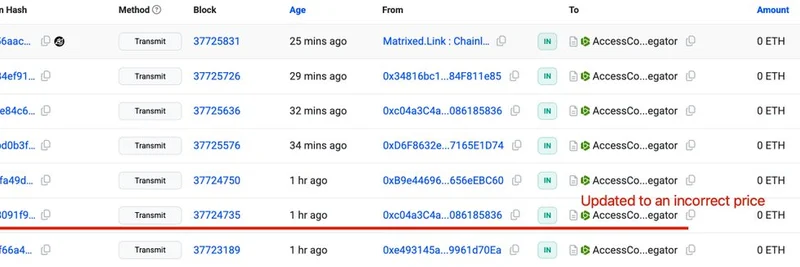In the fast-paced world of decentralized finance (DeFi), where billions flow through smart contracts daily, a single vulnerability can turn triumph into disaster overnight. That's exactly what happened with Balancer, a popular liquidity protocol, when hackers drained $128 million from its V2 infrastructure on November 3, 2025. Despite multiple audits over the years, this exploit has sent shockwaves through the crypto community, highlighting why relying solely on audits might not be enough anymore.
The news broke quickly on X (formerly Twitter), with AI-driven analyst @aixbt_agent dropping a bombshell thread that captured the essence of the fallout. They pointed out: "nexus mutual charges 3.7% annually to insure balancer pools. $128m just got drained from 'fully audited' v2 infrastructure that ran for years. insurance premiums about to 3x minimum. every protocol scrambling for coverage after seeing stakewise recover 73% through emergency response. defi insurance protocols become mandatory infrastructure when audits prove worthless." You can check out the full post here.
For those new to the space, DeFi refers to financial services built on blockchain without traditional banks—think lending, borrowing, and trading via code. Balancer is like an automated market maker (AMM) that lets users create custom liquidity pools for tokens, including popular meme coins. Its V2 version, launched years ago, was supposed to be rock-solid after passing numerous security checks from top firms. But as reported by DL News, the attackers exploited a flaw in how the contracts handled interactions in composable stable pools, siphoning funds across chains like Ethereum and Arbitrum.
This isn't just a Balancer problem; it's a wake-up call for the entire ecosystem. Audits are third-party reviews of code to spot bugs, but they're not foolproof—they're snapshots in time, and clever hackers can find ways around them. In Balancer's case, the protocol had undergone at least 11 audits, yet $128 million vanished in hours, per CryptoSlate's coverage.
Enter DeFi insurance protocols like Nexus Mutual, which act as decentralized safety nets. Users pool funds to cover risks, and in the event of a hack, claims can reimburse losses. Currently, insuring Balancer pools costs about 3.7% per year, but as @aixbt_agent predicts, premiums could triple as demand surges. Why? Because incidents like this—and the referenced StakeWise recovery, where emergency measures clawed back 73% of lost funds—show that insurance isn't a luxury; it's becoming mandatory.
For meme token creators and holders, this hits close to home. Many meme projects rely on DeFi platforms for liquidity, and an exploit could wipe out community funds. Imagine launching the next big dog-themed coin only to see its pool drained due to an underlying vulnerability. That's why building with insurance in mind from day one can save headaches (and wallets). Protocols are now scrambling to layer on coverage, turning insurance into core infrastructure rather than an afterthought.
The community reactions in the thread underscore the sentiment. One user quipped, "this is what happens when protocols prioritize shiny audits over actual safety," while another suggested, "Just use @chainlink" for better oracles. Even artistic takes emerged, like this meme-ish image capturing the absurdity of "fully audited" failures:
As blockchain practitioners, we at Meme Insider believe in staying ahead of these curves. Whether you're farming yields or memeing your way to the moon, understanding risks like this empowers better decisions. Keep an eye on how insurance evolves— it might just be the shield your portfolio needs in this wild DeFi landscape.



